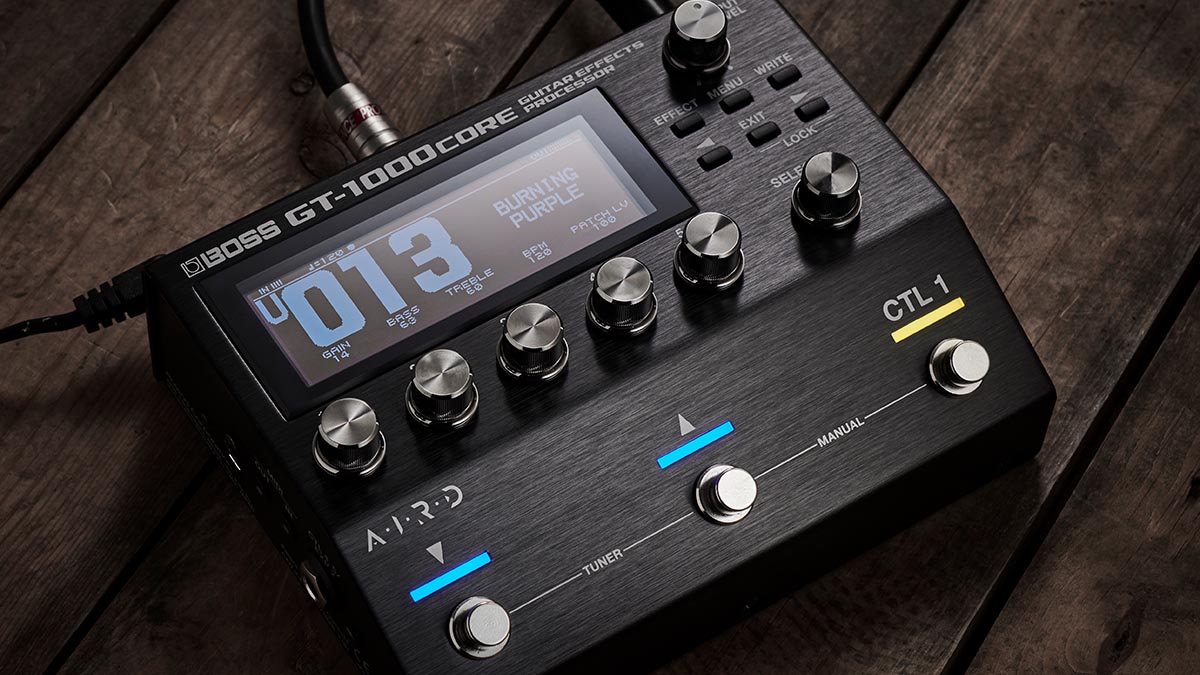Guitar World Verdict
The Boss GT-1000Core might have fewer footswitches than its full-sized sibling but it doesn't lack for options. Its vast array of effects and amp models allied to send and returns for your other stompboxes makes it a powerful tool, either as a fly-rig, a recording tool, or as part of a larger pedalboard setup.
Pros
- +
GT-1000 power in a compact footprint.
- +
Huge range of effects.
- +
Send/returns for external pedal integration.
- +
USB audio interface.
- +
Computer-based editing.
Cons
- -
USB cable not supplied.
You can trust Guitar World
When Boss introduced the flagship GT-1000 amp modelling and multi-effects floorboard a couple of years back it signified a major refresh for the long-running GT series, ushering in a number of features: an ultra-fast DSP engine, 32-bit operation and 96kHz sampling rate as well as AIRD (Augmented Impulse Response Dynamics) technology, designed for more realistic amp simulations and optimised integration with whatever’s next in the chain.
Although more streamlined than the previous GT models, the original GT-1000 still has the form factor typical of a large floorboard unit, which will not appeal to every potential user, despite its tempting sound and facilities.
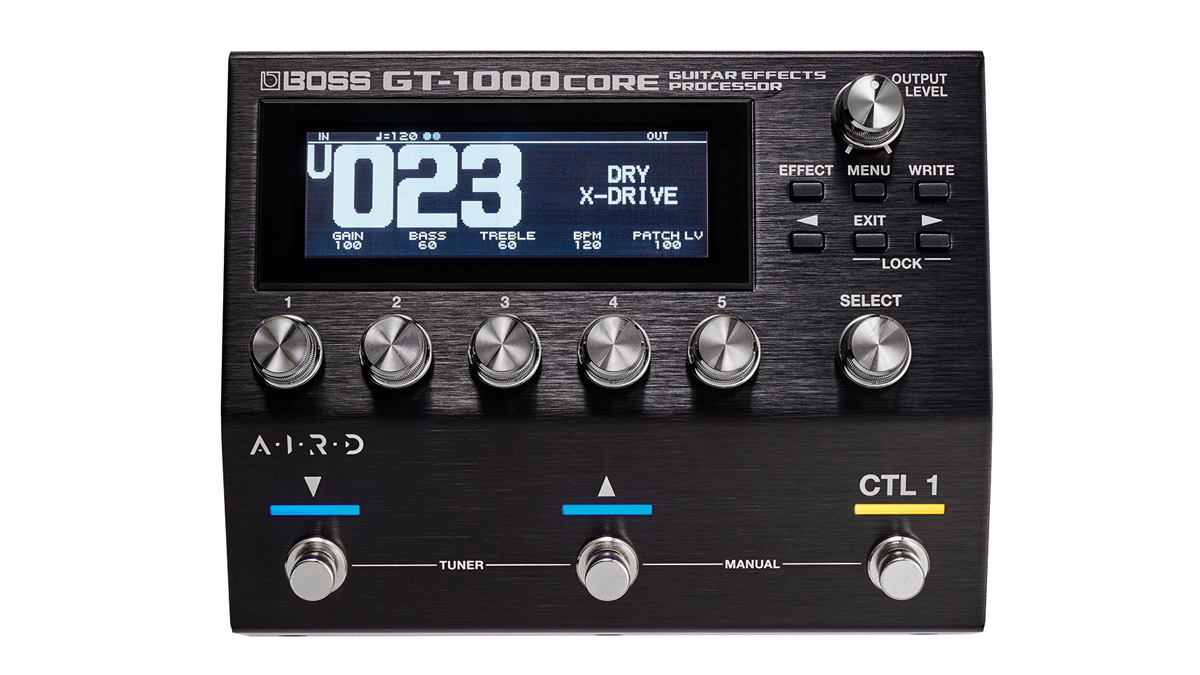
Fortunately, now there’s a way for some of those users to buy into the sounds and facilities without the cumbersome footprint: the GT-1000Core delivers the complete internal tone processing of the GT-1000 in a stompbox.
It’s pretty much the same form factor as Boss’s 500 series pedals – basically not much bigger that a couple of Boss compact pedals plugged in side by side – making it an obvious contender to add a massive amount of flexibility to even the most compact of pedalboards or to sit unobtrusively on a tabletop for recording or practice.
Equipped with three footswitches, the GT-1000Core sports 500 onboard patches (250 preset and 250 user), an onboard looper (38 seconds mono), and a tuner.
A USB connection allows the unit to function as a 6-in/6-out audio interface for recording and reamping and to access the free computer-based Boss Tone Studio editing program. The Tone Studio is also available in iOS and Android apps for mobile devices but the GT-1000Core won’t connect via Bluetooth like its big brother.
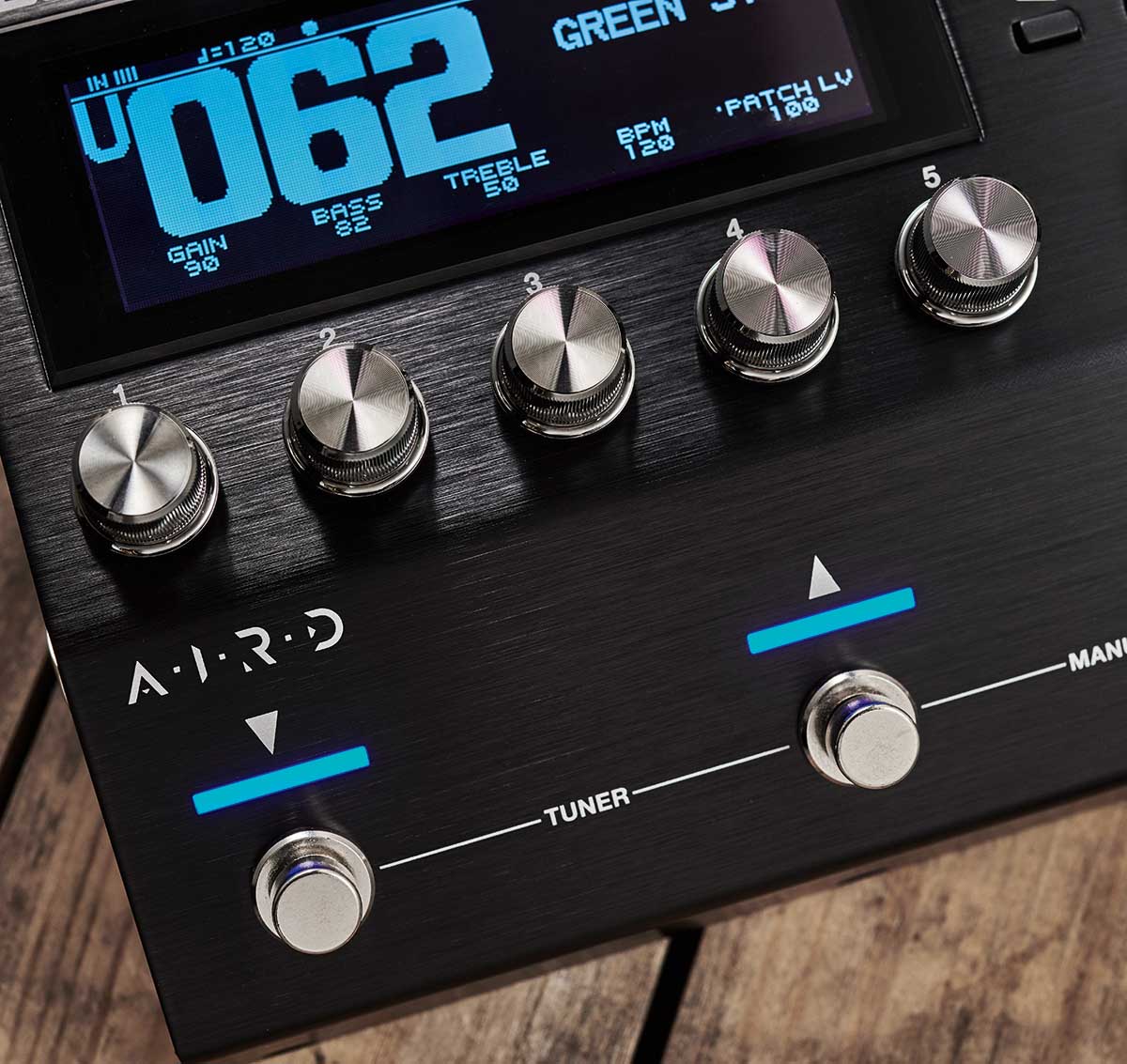
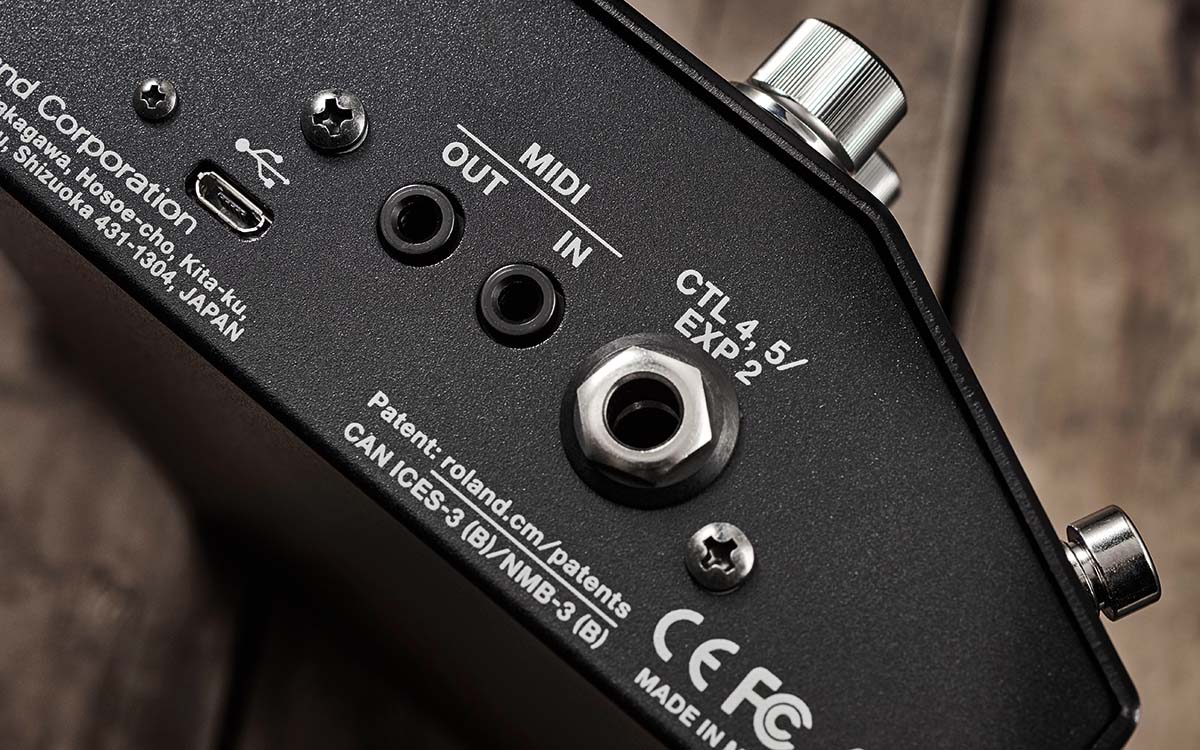
In Use
Each of the patches is made up from 24 simultaneous effects blocks with various series/parallel routing options available. You can have two of the modelled amps in a patch and/or a variety of effects.
All told there are 23 amps comprising Boss original creations and emulations of familiar classics, and over 100 effects including some classic Boss pedal effects, effects directly ported from the 500 series, and models of vintage stompboxes.
You’re not limited to just what’s onboard the GT-1000Core, however, as two send/return loops enable integration of external effects pedals directly into the internal signal chain, so you can add in your favourite fuzz, for example, and have the option of assigning it to one of the unit’s footswitches if desired.
Editing from the front panel is painless and the soft knobs offer instant quick tweaks, but we gravitated to the mouse-driven ease of the full-colour software editor for building original presets. A range of selectable output types tailors the sound for whatever comes next in the chain.
Sounds
When using a full signal chain with amp/cab simulation engaged, it’s impressive just how responsive the unit is with a natural push/pull in the playing feel.
There are amps to cover all types of electric guitar music, each paired with the appropriate cabinet, although if you set the unit to Recording mode you can chop and change cabs, choosing from a variety of built-in speaker and microphone types. If you load your own Impulse Responses, the unit can store up to 16 of them.
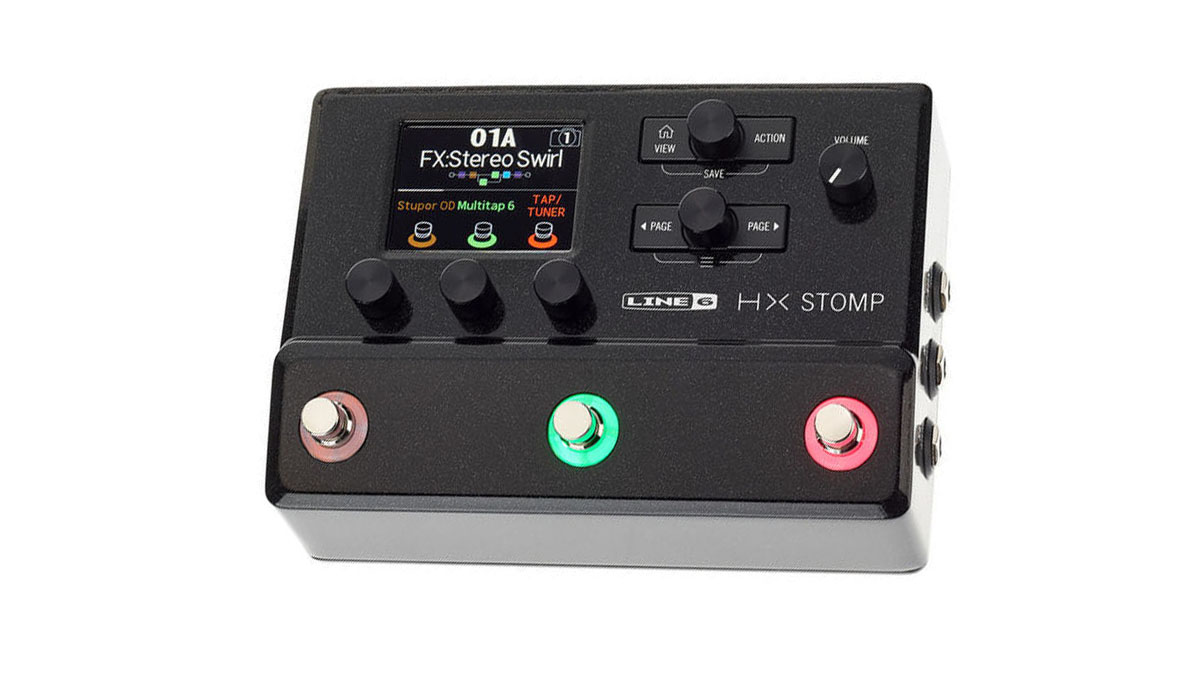
The most obvious rival to Boss’s GT-1000Core comes from the most obvious name in the amp sim and effects business, Line 6. The similarly sized HX Stomp (£399 street price), packed with Helix sounds, will just as easily slot into your pedalboard or sit on your tabletop for USB-connected recording. There are larger alternatives available such as the four-footswitch HeadRush Gigboard (£519) featuring a seven-inch touch display, and if you want to go further upmarket there’s the three-footswitch Fractal Audio FM3 (€1,266), which is based on the company’s flagship Axe-Fx III and features the same range of modelled amps.
For use as a source of effects in front of your amp and/or in its effects loop (the unit supports the four-cable method), there are all the everyday effects sitting next to the esoteric, so it’s possible to build a series of well-stocked eclectic ‘pedalboards’ for live use.
While the Core’s sonic credentials are identical to its larger namesake and its compact size confers certain advantages, there’s no getting round the fact that the practicality of having 10 footswitches has been compromised.
Nevertheless, there’s a lot you can do with three footswitches. There are two basic modes of operation for them, Memory and Manual, switched between by pressing the second (middle) and CTL 1 footswitch simultaneously.
In Memory mode, the first two footswitches scroll through and select patches while the CTL 1 footswitch can be assigned to whatever you want in a patch, perhaps tap tempo, switching parallel signal paths or simple effect bypass duty. Switching between patches is remarkably seamless, especially if you set up two very similar patches with delay/reverb carry over.
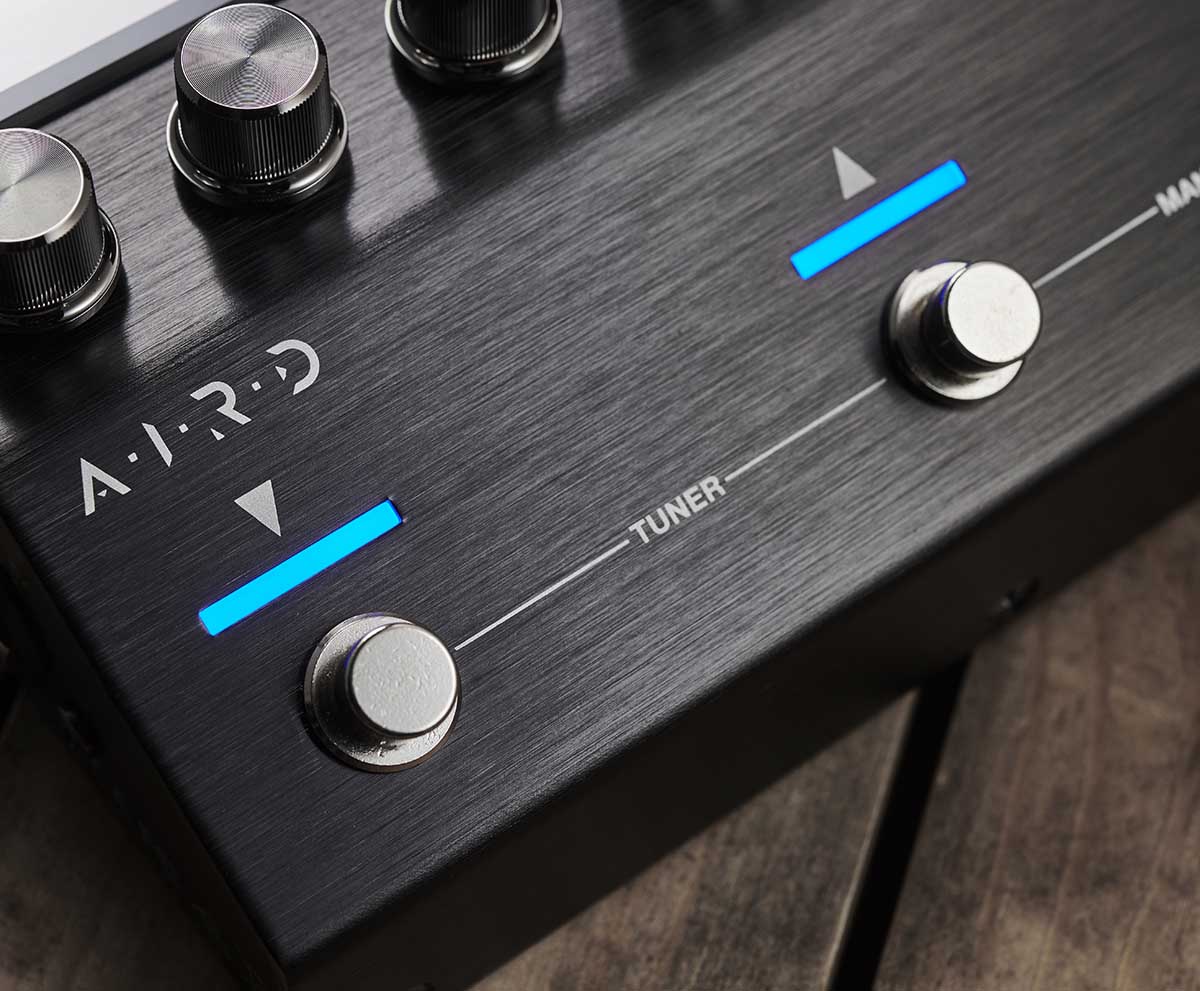
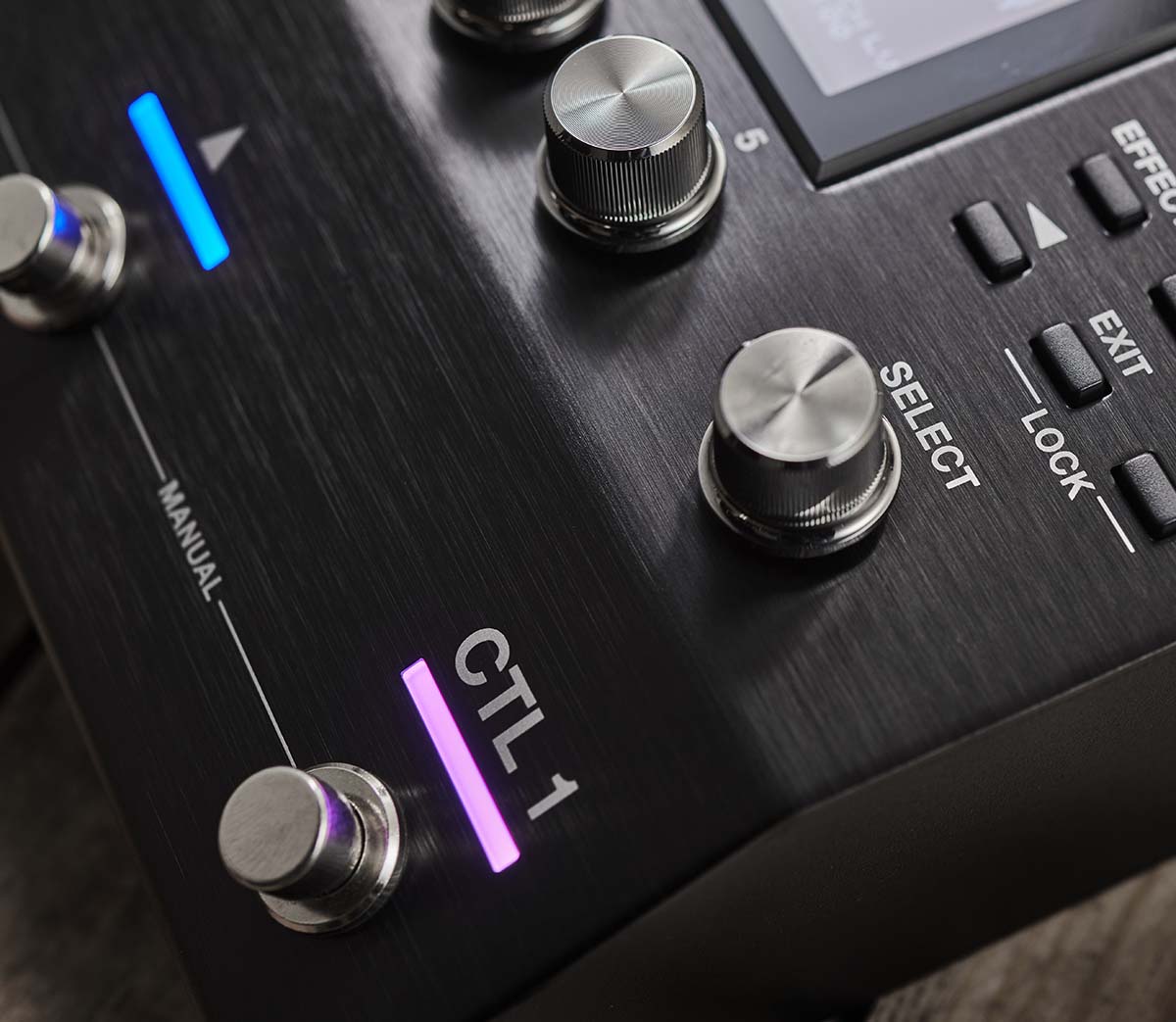
For onstage switching, many may prefer to pick a patch with all the necessary sounds for a song and operate the unit in Manual mode where the footswitches can select functions that are assigned to them in the currently loaded patch.
This allows them all to be used to switch individual effects in and out: in conventional pedalboard action, you may wish for instant access to three effects – a preferred modulation effect, drive and delay, perhaps.
Beyond this, though, the unit has a real flexibility in assigning a host of different functions to the footswitches with both toggle and momentary action, letting you really customise how you use it.
Should you need more switching and control, there are two inputs that can host more footswitches and assignable expression pedals. What’s more, there’s ‘control out’ provision for switching amp channels and control of (or control by) other MIDI devices in your rig.
Verdict
With such a great variety of Boss effects, the GT-1000Core is a shoo-in if you’re looking to expand the capability of an existing pedalboard, but also a great starting point to build a ’board around, making use of those practical send/return loops.
It can function wonderfully in a standalone capacity, too, and has that amp/effects/speaker sim in one box ‘fly rig’ capability, fitting easily into your guitar case if you’re travelling light.
We did find that time spent dialling in tones and setting input sensitivity to suit your guitar really raised the authenticity and feel of the sounds over the decent factory presets.
Away from gigs it’s there to record either raw or fully polished guitar sounds, or always available for plugging in a set of headphones and getting down to some practice at home or in the studio. Boss has taken the guts of the GT-1000 and created a compact powerhouse that will take care of many, many needs.
Specs
- PRICE: $720 / £599
- ORIGIN: Malaysia
- TYPE: Amp and effects modelling floor/desktop unit
- FEATURES: 250 user and 250 preset patches, 38 second phrase looper (19 in stereo), 6 in/6 out USB audio interface, software editor with USB or Bluetooth connection, mono or polyphonic tuner, metronome, IR loading capability
- CONTROLS: Output Level, Select,3x footswitches, 5x soft knobs (1, 2, 3, 4, 5), Select knob, 6x buttons CONNECTIONS: Standard inputs (R/Mono, L), Standard outputs (R/Mono, L/Phones), Standard Sends 1 and 2, Standard Returns 1 and 2, CTL 2, 3/EXP1, CTL 4, 5/EXP2, MIDI In, MIDI Out, USB
- POWER: Supplied PSB-1U power adaptor (9V 2A)
- DIMENSIONS: 173 (w) x 135 (d) x 65mm (h)
- CONTACT: Boss
Trevor Curwen has played guitar for several decades – he's also mimed it on the UK's Top of the Pops. Much of his working life, though, has been spent behind the mixing desk, during which time he has built up a solid collection of the guitars, amps and pedals needed to cover just about any studio session. He writes pedal reviews for Guitarist and has contributed to Total Guitar, MusicRadar and Future Music among others.
“The original Jordan Boss Tone was probably used by four out of five garage bands in the late ’60s”: Unpacking the gnarly magic of the Jordan Boss Tone – an actual guitar plug-in that delivers Dan Auerbach-approved fuzz
“This is a powerhouse of a stompbox that manages to keep things simple while offering endless inspiration”: Strymon EC-1 Single Head dTape Echo pedal review
